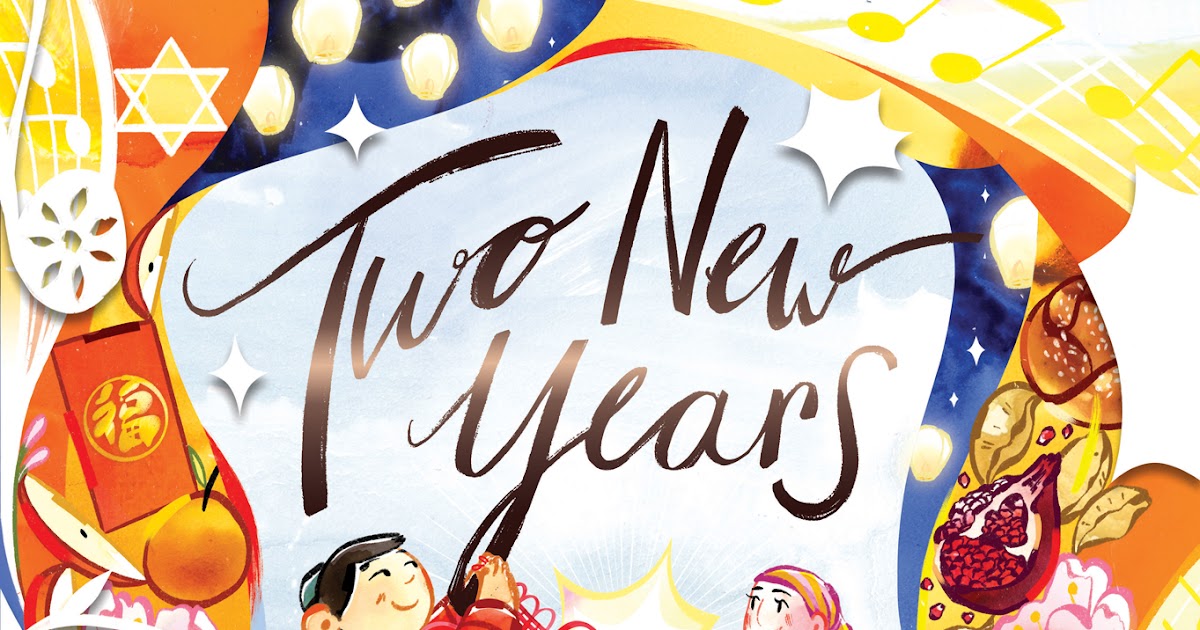For this multicultural family, inspired by the author’s own, two New Years mean twice as much to celebrate! In the fall, Rosh Hashanah offers an opportunity to dip apples in honey, cast away mistakes, and lift voices in song at the synagogue. In the spring, Lunar New Year brings a chance to eat dumplings, watch dragon dances, and release glowing lanterns that light up the sky.
With joyful prose and luminous illustrations, Richard Ho and Lynn Scurfield invite readers of all background to experience the beauty of two New Year traditions, paying homage to the practices that make each unique while illuminating the values of abundance, family, and hope that they share.
My Review: In Two New Years, a young family of Asian descent and Jewish faith honors the beliefs and traditions of both cultures in their home, including the Jewish New Year (Rosh Hashanah) and Lunar New Year. This is achieved through text and illustrations that reflect the differences and similarities between the two holidays, including certain customs, beliefs, meals, and others ways they choose to celebrate. There is also a visual glossary at the end which goes more in depth on certain subjects.
From a design standpoint, I enjoyed the vivid watercolor illustrations, which subtly and seamlessly intertwine Jewish and Chinese designs, symbolizing the blending of cultural traditions, and especially loved the illustrations that highlighted the importance of family, togetherness, and new beginnings in both cultures. I also appreciated the visual juxtaposition of the two holidays, which allows young readers to compare the two celebrations side-by-side. For example, the illustration on one page shows a meal served at Rosh Hashanah (which may include fish, pomegranates, challah, apples dipped in honey, etc.) and the opposite page shows a meal served during the Lunar New Year (fish, sweet rice balls, long noodles, dumplings), etc.) Readers can also visit the previously-mentioned visual glossary to learn even more about the foods and what they symbolize.
Young readers who are unfamiliar with these two cultures are sure to be fascinated with the ways in which other cultures celebrate the New Year, while readers who have lived one or both of these experiences will be delighted to see their own cultural traditions reflected on the page. As an adult, my favorite part of the book was the visual glossary, which dove a little deeper into the specific beliefs and traditions of both Jewish and Chinese people in regards to the New Year.
According to the author’s note, Two New Years was inspired by Richard Ho’s own life experiences as a Jewish Chinese-American. As a convert to the Jewish faith in his adult life, Ho made a conscious choice to embrace both Jewish and Chinese cultural traditions and to raise his children to celebrate and honor both aspects of their heritage. In practice, he found that they aligned more than expected. Two New Years is a beautiful representation of his efforts, and wonderful way for readers, young and old, to learn about these two seemingly disparate groups and how they celebrate the New Year.
My Rating: 4.25 Stars
For the Sensitive Reader: All clear.
